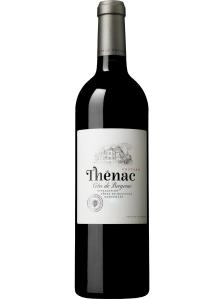Cotes de Bergerac is an appellation for the higher-quality red and white wines produced in the historic Bergerac region of southwestern France. Vineyards cover a large area along the Dordogne river valley, and the appellation is given to wines that are made to slightly stricter standards than the simpler Bergerac AOC. Cotes de Bergerac wines are made predominantly from Merlot and Semillon, depending on their color, and represent a soft, easygoing alternative to the more serious wines of Bordeaux to the west.
The vineyard zone of the appellation covers some 90 communes that center on the town of Bergerac, 50 miles (80km) from the city of Bordeaux. The hills here rise steeply away from the river, giving a range of terrain for growers to position their vines. The Cotes de Bergerac area is delimited by forest to the north, and the Dropt river to the south.
Vines have been grown along the banks of the Dordogne since Roman times. The Middle Ages marked a particular area of growth, helped along by monasteries, which made wine as a necessity of life. After the marriage of Eleanor of Aquitaine to Henry Plantagenet (Henry II of England) in 1154, the Aquitaine province (along with Bordeaux) came under English rule.
However, almost two centuries later, at the outbreak of the Hundred Years' War, the port of Bordeaux remained under English control, while the area immediately to the east, which included Bergerac, Cahors, Buzet and Gaillac, was still under French rule. As such, wines from these areas that were exported along the Dordogne were subject to heavy taxes by the English and were held back until the Bordeaux wines had been exported to northern Europe.
As a whole, the vineyard zone of the Cotes de Bergerac has a maritime climate with certain continental influences. Its position inland from Bordeaux means that there is less overall rainfall, and more seasonal variation: summers are hotter and winters colder. However, winds that are funneled along the Dordogne valley bring an Atlantic influence, cooling vineyards and contributing moisture in spring and autumn.
The size of the Bergerac area brings with it a wide variation in terroir. To the east and west of Bergerac town, there are considerable deposits of limestone from an ancient sea, while the area immediately east of Bergerac town is covered in sandy and gravelly clay known as boulbènes. On the southern banks of the Dordogne, north of the Dropt river, the alluvial sandy gravel soils also make for excellent vineyard land.
Cotes de Bergerac wines are made of grape varieties that betray the region's close proximity to Bordeaux. Along with Merlot, red wines may contain Cabernet Sauvignon, Cabernet Franc and Cot (Malbec). The white wines produced under the Cotes de Bergerac title tend to be sweet or semi-sweet, made from Semillon, Sauvignon Blanc and Muscadelle, with smaller amounts of Ugni Blanc.


